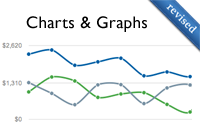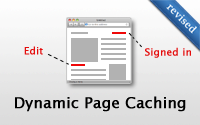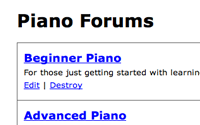Categories
- Active Record
- Active Resource
- Active Support
- Administration
- Ajax
- APIs
- Authentication
- Authorization
- Background Jobs
- Caching
- Code Walkthrough
- Controllers
- Debugging
- Deployment
- eCommerce
- Forms
- Mailing
- Models
- Performance
- Plugins
- Production
- Rack
- Rails 2.0
- Rails 2.1
- Rails 2.2
- Rails 2.3
- Rails 3.0
- Rails 3.1
- Rails 3.2
- Rails 4.0
- Refactoring
- Routing
- Search
- Security
- Testing
- Tools
- Views
Polling for Changes (revised)
Polling may not be as common today as pushing changes over an open socket, however it is still an effective, simple solution if you do not need instantaneous updates.
(10 minutes)
Charts & Graphs (revised)
If you have a lot of data, consider adding a graph to provide an overview of it. Here I show how to use Morris.js to chart an Order model and visualize trends in the data.
(12 minutes)
Turbolinks
Turbolinks can make your Rails app feel faster by using JavaScript to replace the page content when clicking a link. It will be default in new Rails 4.0 applications, but here I show how to use it in Rails 3 and mention some of the gotchas.
(7 minutes)
Autocomplete Search Terms
Learn how to add autocompletion to a search form and improve performance using Rack middleware, caching and switching from SQL to Redis.
(17 minutes)
Dynamic Page Caching (revised)
Page caching is great for speeding up the performance of a page, but what if it contains user-specific content? Learn how to load content in dynamically through JavaScript in this episode.
(7 minutes)
Rails Modularity
Rails is a modular framework allowing you to include only what you need. Here I show how the smallest Rails app works, and then I take a look at how to whittle down a full Rails application stack.
(13 minutes)
Dynamic Page Caching
Use JavaScript to allow dynamic content in a page cache. In this episode I show you how to insert the user-specific content into a page through JavaScript.
(11 minutes)







